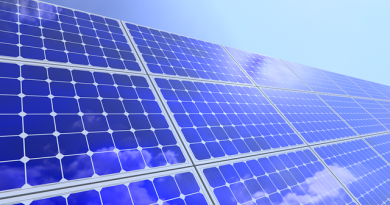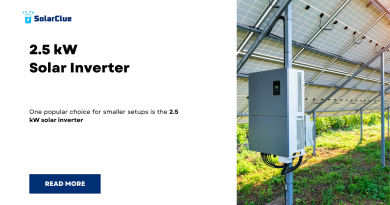How Solar Energy Powers a Greener Future
In today’s world, where climate change and environmental degradation are pressing concerns, solar energy has emerged as one of the most effective and sustainable solutions. By harnessing the power of the sun, we can reduce our dependence on fossil fuels, cut greenhouse gas emissions, and create a cleaner planet for future generations. A solar power system not only supports eco-friendly practices but also delivers financial savings, making it a win-win for both the environment and your wallet.
Table of Contents
- 1 Understanding Solar Energy and Its Role in Sustainability
- 2 Why Solar Energy Is Key to Green Living
- 3 Environmental Benefits of Solar Energy
- 4 Financial Benefits of Going Solar
- 5 Solar Energy and Urban Living
- 6 Challenges in Adopting Solar Energy
- 7 The Future of Solar Energy in Green Living
- 8 How You Can Start Living Green with Solar Energy
- 9 FAQs on Solar Energy and Green Living
Understanding Solar Energy and Its Role in Sustainability
Solar power is generated by converting sunlight into electricity using photovoltaic (PV) panels. These panels capture sunlight and transform it into usable energy for homes, businesses, and industries. Unlike fossil fuels, which release harmful emissions, solar energy is renewable and abundant. It’s a resource that works silently in the background, generating electricity without polluting the air or water.
Why Solar Energy Is Key to Green Living
1. Reduces Carbon Emissions:
One of the main benefits of a solar power system is its ability to reduce greenhouse gases. By replacing electricity from coal or gas with clean solar power, you contribute to lowering your carbon footprint.
2. Conserves Natural Resources:
Solar energy generation does not consume water or deplete non-renewable resources.
3. Promotes Energy Independence:
Installing a solar power system gives you control over your energy production and reduces reliance on non-renewable energy grids.
Environmental Benefits of Solar Energy
1. Reduced Air Pollution
Traditional power plants release carbon dioxide, sulfur dioxide, and nitrogen oxides, which are harmful to both humans and the environment. Solar energy eliminates these pollutants, improving air quality and public health.
2. Lower Water Usage
Most electricity generation methods consume vast amounts of water for cooling. Solar PV systems require minimal water, making them ideal for regions facing water scarcity.
3. Mitigating Climate Change
Switching to solar power helps reduce global warming by cutting greenhouse gas emissions, which trap heat in the atmosphere.
Financial Benefits of Going Solar
Green living isn’t just about protecting the environment—it can also be economically rewarding.
-
Lower Electricity Bills – Once installed, a solar power system can significantly reduce or even eliminate your electricity costs.
-
Government Incentives – Many regions offer subsidies, tax credits, or rebates for installing solar panels, making the investment more affordable.
-
Increased Property Value – Homes equipped with solar energy solutions often sell faster and at higher prices.
Solar Energy and Urban Living
With cities becoming more crowded and energy demands rising, solar installations on rooftops, parking lots, and even vertical building surfaces are helping urban areas embrace green living without compromising on energy needs.
Challenges in Adopting Solar Energy
While solar power offers incredible benefits, there are challenges to consider:
-
Initial Investment – The upfront cost of purchasing and installing a solar power system can be high, though prices are steadily falling.
-
Weather Dependence – Solar panels generate less electricity on cloudy or rainy days, but battery storage can solve this issue.
-
Space Requirements – For maximum efficiency, solar panels need adequate space and proper positioning.
The Future of Solar Energy in Green Living
Advancements in technology are making solar panels more efficient, affordable, and versatile. From floating solar farms to solar-integrated building materials, the possibilities are expanding rapidly. As the world moves towards net-zero emissions, solar energy will play a central role in powering sustainable communities.
How You Can Start Living Green with Solar Energy
-
Evaluate Your Energy Needs – Understand your daily electricity usage to determine the right system size.
-
Choose a Reliable Solar Installer – Quality installation ensures long-term efficiency.
-
Consider Battery Storage – Store excess solar energy for use during nighttime or power outages.
-
Take Advantage of Incentives – Research subsidies and tax benefits in your region.
FAQs on Solar Energy and Green Living
1. How does solar energy reduce carbon footprint?
By generating electricity without burning fossil fuels, solar power eliminates harmful emissions, helping combat climate change.
2. Is a solar power system suitable for all homes?
Yes, but factors like roof size, orientation, and local sunlight availability affect efficiency.
3. How long do solar panels last?
Most solar panels last 25–30 years with minimal maintenance, providing long-term savings.
4. Can solar energy work during cloudy days?
Yes, though production is reduced. Modern panels can still capture indirect sunlight.
5. What is the payback period for a solar power system?
Depending on your location, incentives, and energy usage, the payback period can be 4–8 years.
If you are ready to take a step toward sustainable living and reduce your environmental impact, adopting solar energy could be your best decision yet. Visit solarclue.com or explore in-depth solar insights at blog.solarclue.com and start your journey to a greener future today.




